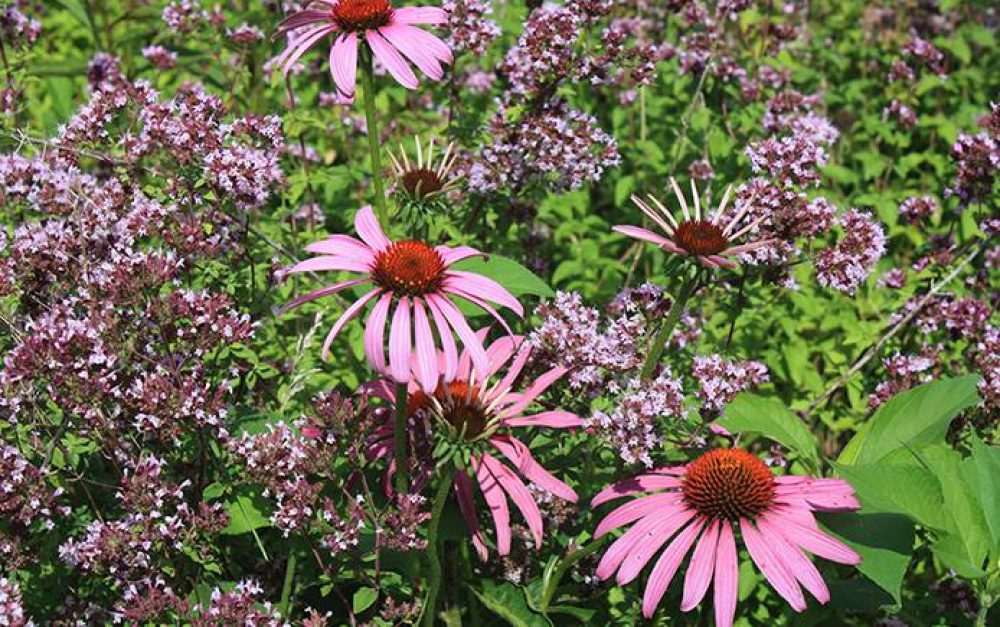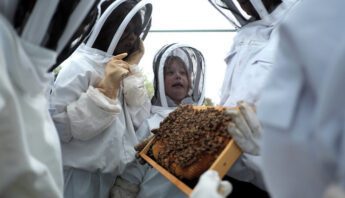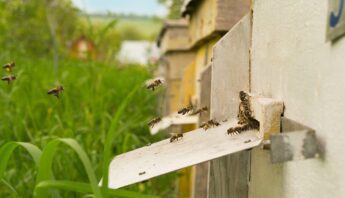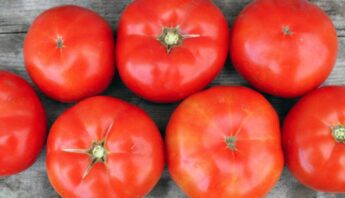Our farm sees pollinators as important employees, and we do what we can to pay them by providing food and habitat throughout the year.
The sky was slightly overcast, so the sun did not bleach out the color with its light. There was only a light, sporadic breeze — just enough to keep a person comfortable. In fact, this was one of those rare times on the farm that I saw something I liked that made me stop what I was doing to go get the camera.
The purple coneflowers and oregano reached peak bloom at the same time. If you looked closer, you would see other plants that had blossomed earlier, or would flower later in the combined herb and natural wild area we maintain to support pollinators on our farm.
If you build it, will they come?
This picture tells us two stories. The first is what you might expect — there is beauty in nature. There is healing for the soul if you can just transport yourself to that field at the moment when it dresses up to show off. It is then that you truly appreciate the whole year of preparation needed to put on this spectacular show.
The second story is one of absence. The flowers were clearly in full bloom and the weather was beautiful. But, there are no pollinators in this picture. Coneflowers and oregano (and the other flowers in the area) are plants that often attract a whole host of invertebrates, yet I observed very few while I stood there to take pictures. The wind was calm, there was plenty of light, temperatures were moderate and it was a typical point in the day when there would be significant insect activity. This area should have been humming at this moment.
But, it wasn’t.
Something is going on
Our farm sees pollinators as important employees, and we do what we can to pay them by providing food and habitat throughout the year. We maintain permanent wild areas and avoid disturbing the soil in parts of the farm so ground-nesting bees and other friendly critters can have a place to thrive. We use intercropping techniques to incorporate annual flowers that encourage pollinators to visit and stay in our fields where we grow fruits and vegetables. We mow around clover patches when they are in bloom and then mow them down when they pass peak to encourage a new flush of flowers.
While it is true that we do continue to observe many interesting creatures on our “Pollinator Paradise” (or so we like to call it), we have been alarmed that we can work so hard to provide habitat and not see certain flowers swarming with all sorts of pollinating insects.
Something is going on here, and it has a direct impact on how well our farm performs. Clearly, the combination of reduced habitat and the excessive use of pesticides bear a cost that our pollinators are paying. In turn, this cost is passed on to growers of food who rely heavily on these workers.
Pollinators hard at work
Zucchini and other squash are most successfully pollinated by squash bees. A squash flower needs to be visited six to 10 times by squash bees in the early morning to set fruit properly. It takes even more visits if other types of bees are the primary pollinator. Our zucchini and summer squash production numbers have gone down per row foot over the years and we have seen more instances of fruit that were not fully pollinated. These cull fruits tend to not fill out properly or yellow and rot off while they are small. We have observed this decline in production over the past eight years on our farm.
We will grant you that weather conditions can prevent visits by pollinators, so it is not unusual to have a period of time every season where there are more culls due to poor pollination. But, there is a difference between seasonal variability and trends across multiple seasons.
Despite our observations that pollinator populations are decreasing, we are still convinced that our efforts are worthwhile. Five years ago, we targeted our melon crops for a new growing strategy. We reduced the number of melon plants by one-third and replaced them with more annual flowering plants such as borage, zinnia, buckwheat and calendula. In response, our melon production actually increased by 30%. And, before you tell me that was an aberration, we repeated those production numbers the next two years with the same system.
One-third fewer melon plants, 30% more marketable fruit and many happy pollinators leads to a couple of pleased farmers. But, this should not take our focus away from the big picture. Pollinators are in decline and it is important that we address it now. We need more people and more farms providing habitat, and we need to break our reliance on the pesticides that threaten our pollinator populations.
If you’re able, would you help us in our work to protect pollinators from pesticides with a donation? Your support will help keep this important work going.








